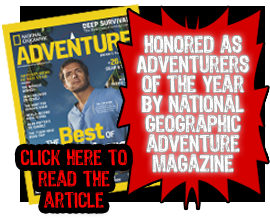 When hearing about a stretch of road acclaimed to be one of the best drives in the world, it is easy to brush it off as a bunch of tourism propaganda to entice a visit to the area. A name like "The Great Ocean Road" seems a little holier than thou coming from the Australians presenting this road as some sort of stage for a romance story out of an old novel. After spending a week in campers, lighthouses, villas, rainstorms, helicopters, jungle canopies, vineyards, and beaches, a new confidence arrives in the naming of this road. It is nothing short of a setting for a great novel and an experience along this road easily produces stories to tell for years to come.
When hearing about a stretch of road acclaimed to be one of the best drives in the world, it is easy to brush it off as a bunch of tourism propaganda to entice a visit to the area. A name like "The Great Ocean Road" seems a little holier than thou coming from the Australians presenting this road as some sort of stage for a romance story out of an old novel. After spending a week in campers, lighthouses, villas, rainstorms, helicopters, jungle canopies, vineyards, and beaches, a new confidence arrives in the naming of this road. It is nothing short of a setting for a great novel and an experience along this road easily produces stories to tell for years to come.
After meeting with Roger Grant (see previous blog), we started our journey along this road built by World War I vetrans as a memorial to all Victorian soldiers in the war. Before I left his office, Roger gave me a copy of the 1918 Charter to build this road. The charter bills the road before it was even built as "A thing of beauty and joy forever." The delivery of this statement comes with relentless success. Each turn of this 500 km section of highway presents many unexpected surprises even after only driving 220 km of it. A road with such a rich past only adds to the experience, creating a desire delve deeper into the history of this place, not just simply see the beautiful scenery.

These tumultuous waters sprinkle the coastline with many other pieces of history including the Cape Otway Lighthouse, which is the southernmost point in Australia. This beacon of hope was built to assist in the safe passage of immigrants to this  continent. Standing at the top of this lighthouse and talking to the keeper gives a new perspective on the beginnings of Australia and certainly allows you to see what makes Australians rough around the edges. Navigating the shipwreck coast and cold, unforgiving waters here makes immigrating to the United States at Ellis Island look like a walk in the park. People down under have no time for nonsense because it is ingrained in their culture since the island was populated by Europeans. There were certainly no princesses on these ships.
continent. Standing at the top of this lighthouse and talking to the keeper gives a new perspective on the beginnings of Australia and certainly allows you to see what makes Australians rough around the edges. Navigating the shipwreck coast and cold, unforgiving waters here makes immigrating to the United States at Ellis Island look like a walk in the park. People down under have no time for nonsense because it is ingrained in their culture since the island was populated by Europeans. There were certainly no princesses on these ships.
Traveling further down the coast we saw the site of the first US casualties from World War II, walked along high suspended walks through the forest, enjoyed a personal tour of a vineyard owned by a family with deep roots along the coast, and generally had a nonstop run of cultural richness. Encountering some wild Koala’s for the first time and the interesting characters along the Great Ocean Road changes an experience of driving down a well known tourist drive from a cliche experience into an unforgettable journey. Over the coming week we will be posting the individual stories that make up our camper van extravaganza down this coast. Who knows, our stories and photos of wild animals, overly hospitable staffs at every establishment here, and picturesque scenery may have you booking your next adventure to the South of Australia.
